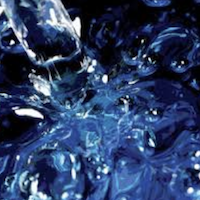Effectiveness of alkaline electrolyzed water in reducing bacterial load on surfaces intended to come into contact with food

Submitted: 22 July 2021
Accepted: 21 September 2021
Published: 4 October 2021
Accepted: 21 September 2021
Abstract Views: 1094
PDF: 431
HTML: 21
HTML: 21
Publisher's note
All claims expressed in this article are solely those of the authors and do not necessarily represent those of their affiliated organizations, or those of the publisher, the editors and the reviewers. Any product that may be evaluated in this article or claim that may be made by its manufacturer is not guaranteed or endorsed by the publisher.
All claims expressed in this article are solely those of the authors and do not necessarily represent those of their affiliated organizations, or those of the publisher, the editors and the reviewers. Any product that may be evaluated in this article or claim that may be made by its manufacturer is not guaranteed or endorsed by the publisher.
Similar Articles
- Oluwatosin Ademola Ijabadeniyi, Elizabeth Mnyandu, Inactivation of heat adapted and chlorine adapted Listeria monocytogenes ATCC 7644 on tomatoes using sodium dodecyl sulphate, levulinic acid and sodium hypochlorite solution , Italian Journal of Food Safety: Vol 6 no. 2 (2017)
- Hamzah Aleryani, Gao Qing, Adhita Sri Prabakusuma, Abdullah Abdo, Sam Al-Dalali, Zakarya Al-Zamani, Jian Xintan, He Jin-song, Bactericidal efficacy of lithium magnesium silicate hydrosol incorporated with slightly acidic electrolyzed water in disinfection application against Escherichia coli , Italian Journal of Food Safety: Vol. 13 No. 1 (2024)
- Federica Savini, Valentina Indio, Federica Giacometti, Yitagele Terefe Mekkonnen, Alessandra De Cesare, Laura Prandini, Raffaele Marrone, Alessandro Seguino, Marika Di Paolo, Valeria Vuoso, Federico Tomasello, Andrea Serraino, Microbiological safety of dry-aged meat: a critical review of data gaps and research needs to define process hygiene and safety criteria , Italian Journal of Food Safety: Vol. 13 No. 3 (2024)
- Federica Savini, Federica Giacometti, Sean Alberto Cuomo, Federico Tomasello, Yitagele Terefe Mekonnen, Fulvia Troja, Valentina Indio, Marco Tassinari, Alessandra De Cesare, Andrea Serraino, Reduction of the microbial load in meat maturation rooms with and without alkaline electrolyzed water fumigation , Italian Journal of Food Safety: Vol. 12 No. 3 (2023)
You may also start an advanced similarity search for this article.

 https://doi.org/10.4081/ijfs.2021.9988
https://doi.org/10.4081/ijfs.2021.9988



